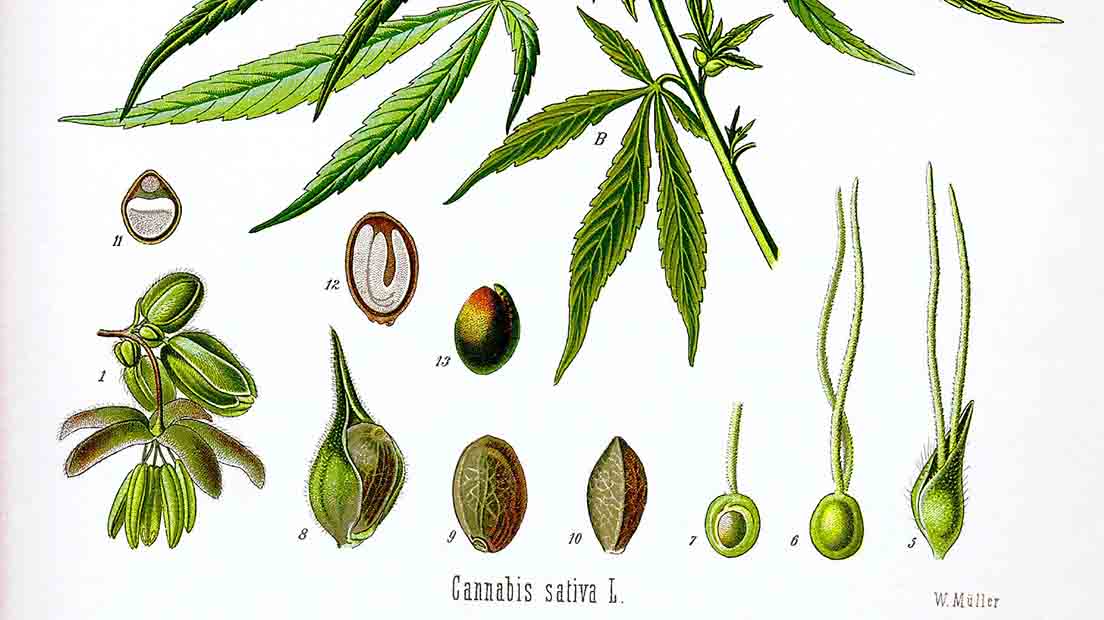Did you know that when you say ‘Cannabis’ you ‘speak Scythian’? If you did not know that, now you do, because according to Wikipedia, Cannabis is a Scythian word. The same article also says that “the oldest written record of cannabis usage is the Greek historian Herodotus‘s reference to the central Eurasian Scythians taking cannabis steam baths: “After a burial, Scythians purify themselves by washing their heads and cleansing their bodies as follows: they first lean three stakes of wood against one another and then stretch woolen cloth around them, securing it as tightly as possible. Then they throw red-hot stones into a trough set in between the stakes. Now there is a plant called cannabis, which grows in their land and which most resembles flax, except that cannabis is far superior in its thickness and size. It grows both wild and cultivated, and from it the Thracians make clothing very much like garments of linen. Unless someone had real expertise, he would think they were made of linen and not cannabis; and if he had never seen cannabis at all, he would certainly think the cloth was linen. Well, the Scythians take the seeds of this cannabis, creep beneath the wool covering the stakes, and throw the seeds onto the blazing-hot stones within. When the seeds hit the stones, they produce smoke and give off a vapor such as no steam bath in Hellas could surpass. The Scythians howl, awed and elated by the vapor. (Histories, 4.73-74)
Scholars commenting on the passage above fail to mention the first part, namely that the Scythians took those cannabis vapor baths not for the sake of intoxication alone. But as can be seen, it was a Scythian funeral rite of which purification was just a part.
E. L. Abel in Marijuana: The First Twelve Thousand Years observed another possible reason for the ritual: “Throughout the ages, [Cannabis] has been extolled as one of man’s greatest benefactors— and cursed as one of his greatest scourges. [Cannabis] is undoubtedly an herb that has been many things to many people. Armies and navies have used it to make war, men and women to make love. Hunters and fishermen have snared the most ferocious creatures, from the tiger to the shark, in its Herculean weave. Fashion designers have dressed the most elegant women in its supple knit. Hangmen have snapped the necks of thieves and murderers with its fiber. Obstetricians have eased the pain of childbirth with its leaves [female flowers]. Farmers have crushed its seeds and used the oil within to light their lamps. Mourners have thrown its seeds [inflorescences] into blazing fires and have had their sorrow transformed into blissful ecstasy by the fumes that filled the air.”
A. G. Sherratt suggested that people belonging to the Sredni Stog culture, which flourished from about 4300 to 3500 BCE in the area of what is now present-day Ukraine, used Cannabis to make a “socially approved intoxicant,” celebrating its significance “by imprinting it on their pottery.” Sherratt argued that the ingestion of Cannabis was a fundamental aspect of Eastern European mysticism.
Sredny Stog Culture is a pre-Kurgan archaeological culture from the 5th–4th millennia BC and is named after the Dnieper river islet of today’s Serednii Stih (in Ukrainian) where it was first located.
In the context of the modified Kurgan hypothesis of Marija Gimbutas, this pre-kurgan archaeological culture could represent the Urheimat (homeland) of the Proto-Indo-European language which others associate with the later Yamnaya culture.
Read about the connections between the Yamnaya Culture, the Scythains, and Ukraine >
Curious fact: According to Etymonline, the word canvas derives from the same root as cannabis because canvas cloth was originally made from that plant. There is also an authoritative alternative opinion on the etymology of Cannabis. Prominent Soviet linguist Academician O. Trubachev (1930-2002) postulated in his Indoarica, that *kana-pus- is a Proto-Indo-European composite word in which the first part is related to ancient Indian word for ‘seed’. Trubachev’s suggestion supports Sherratt’s statement about the Sredny Stog culture’s use of cannabis long before the Scythians who were most likely their direct descendants.
‘Royal Scythia, Greece, Kyiv Rus‘ book has more insights into the Scythian Culture.
